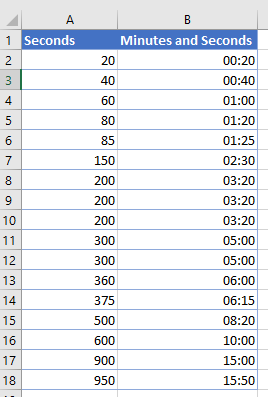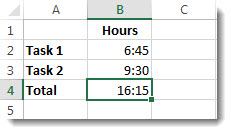

We won't nest the formula or make any complex computations.

The plain vanilla version of the formula will help you get a bird's eye view of the most basic use-case of the TIME function. Example 1 – Plain Vanilla Formula for the TIME Function Let's try to see some examples of the TIME function.
If you input a non-numeric value in any of the three arguments, the function will return a #VALUE! error. If you input a negative value or a value greater than 32676 in any of the three arguments, the function will return a #NUM! error. The TIME function's output resets to 0 each time the hour value reaches 24. The TIME function is available in all MS Excel versions starting with Excel 2000. Important Characteristics of the TIME function In cases where you input a value greater than 59, the function will automatically convert it to hours, minutes, and seconds. 'second' – The second argument is a required argument where you need to insert a number between 6. In cases where you input a value greater than 59, the function will automatically convert it to hours and minutes. 'minute' – The minute argument is a required argument where you need to insert a number between 6. In cases where you input a value greater than 23, the function will divide the number by 24 and use the remainder of the division as the value for the hour argument. Otherwise, hour value will start form 0 for every 24 hours, which means that values like 1.5 or 4.5 will return return 30 minutes.'hour' – The hour argument is a required argument where you need to insert a number between 6. Note that quotes are used multiple times to tell Excel that, in those instances they are not being used for closing another quote, but they are special characters.įinally, we enclosed hour ( h) value withing square brackets to make sure values exceed 24 hours. Remember to enter string values inside quotes. You can also use rich text for these parameters (i.e. Excel has predefined placeholders for every part of a time value: h, m and s represent hour, minutes and seconds respectively. This is the only arithmetic operation we need. This can be done by dividing the value by 24. For example 1 is equal to 24 hours, 0.5 is equal to 12 hours, and 0.001 is equal to 1 minute and 26 seconds.īecause the integer part of numbers represent the day value, the first step is converting the initial value from day base to hour base. While days are counted as integers, time values get decimal part. Almost all number formatting options are supported by TEXT function as well.Įxcel keeps date time values as numbers and assumes that the date is equal to 1, then adds 1 for every next single day. That formatting logic works the the same way as number formatting, with which you add $ sign or decimal digits. Close the formula with ) and press Enter to complete it.Įxcel's TEXT function converts numerical values to text values by applying a formatting. #Excel minutes to hours and minutes code
Type in the format code that includes h, m and s placeholders " ""hours,"" m ""minutes, "" s ""seconds""".Select or type in the range reference that contains numeric value you want to convert B3,.Here, we're going to take a look at a simpler approach by using Excel's TEXT function. If you want to convert a number to time values, you need some additional operations, multiplying and dividing between days, hours, minutes, and seconds.






 0 kommentar(er)
0 kommentar(er)
